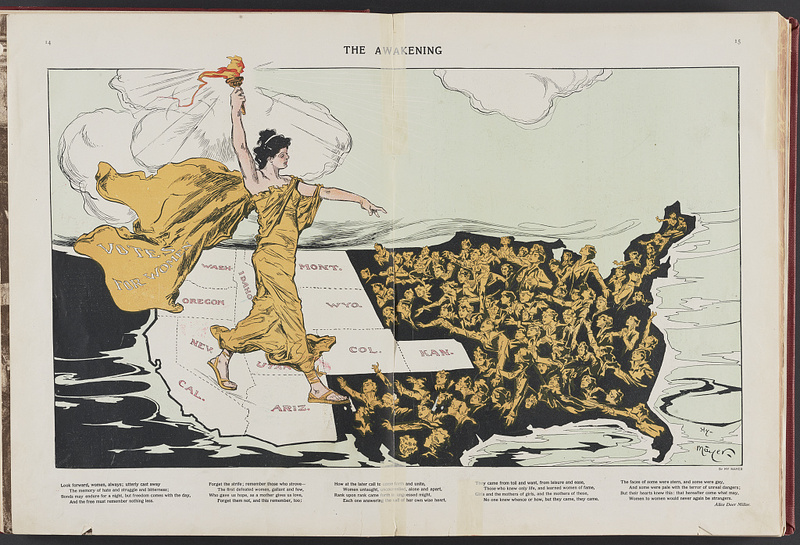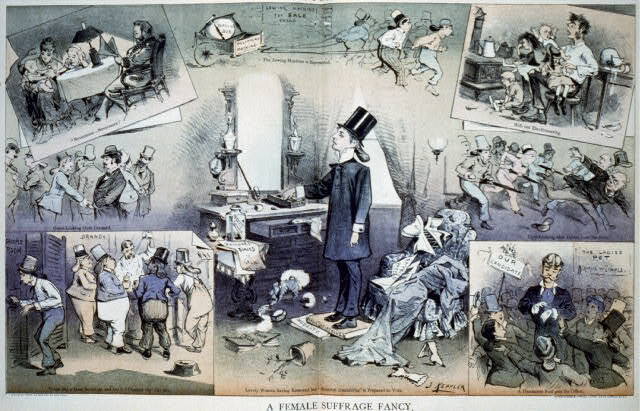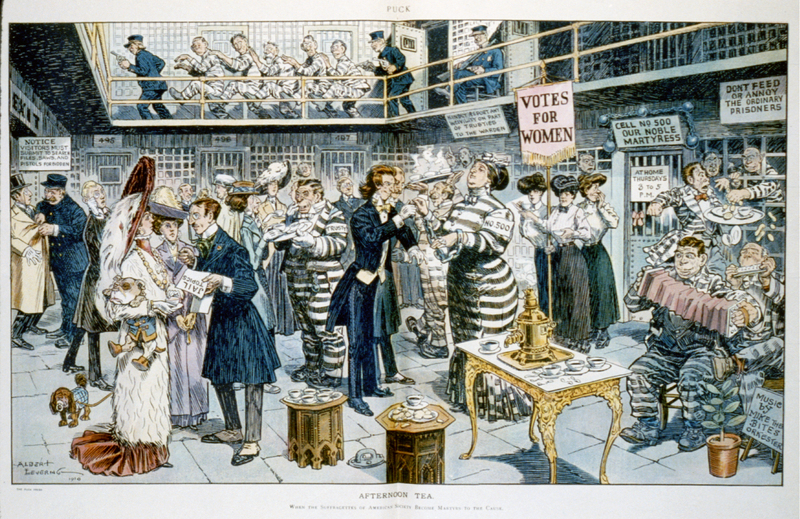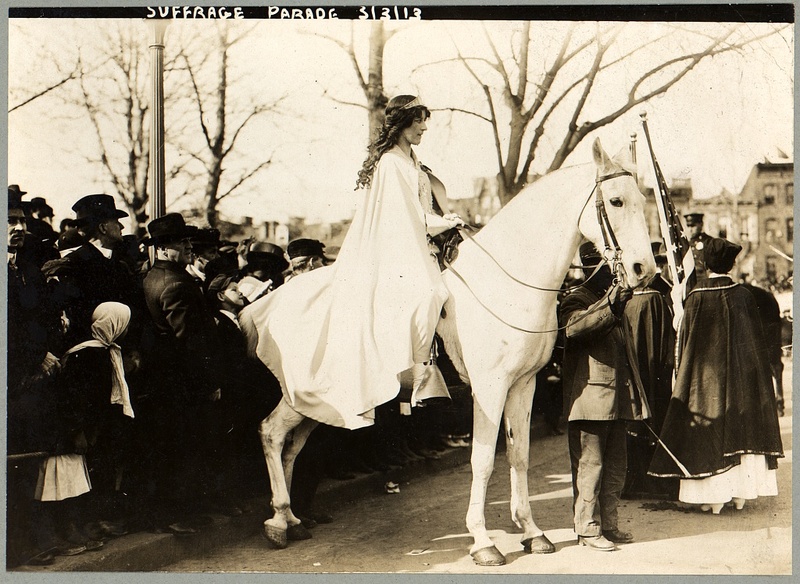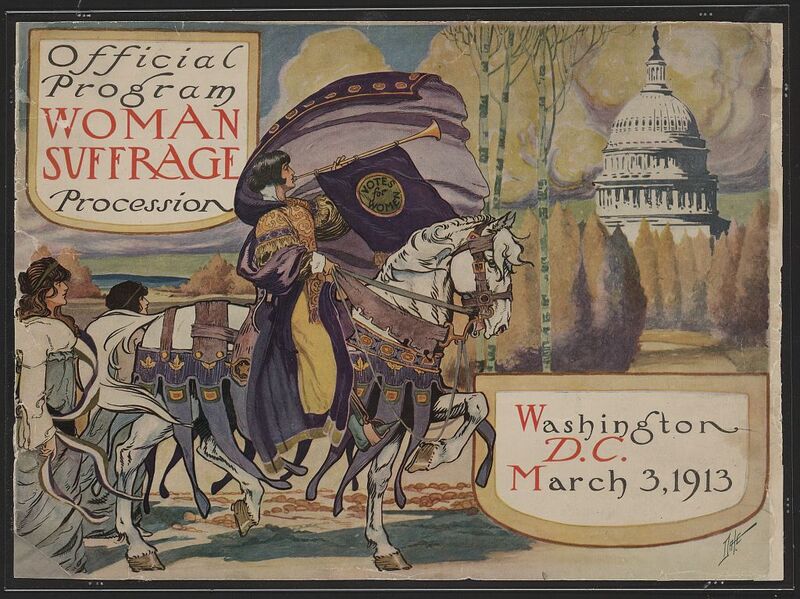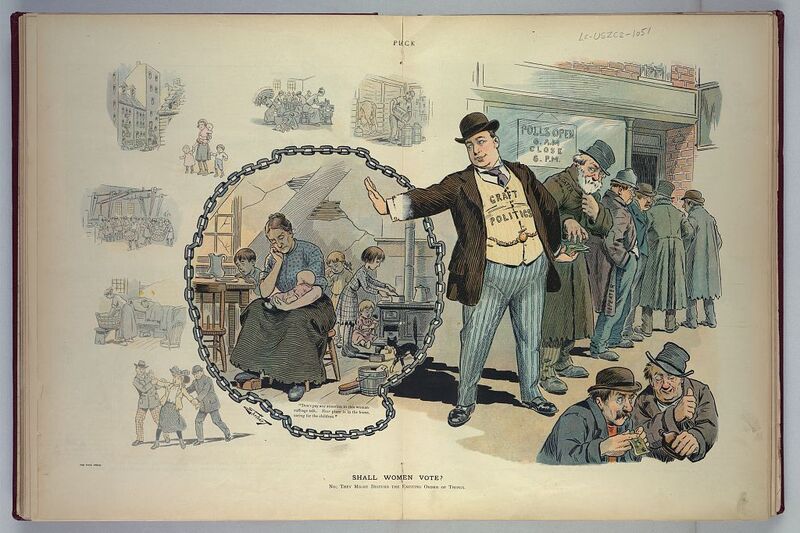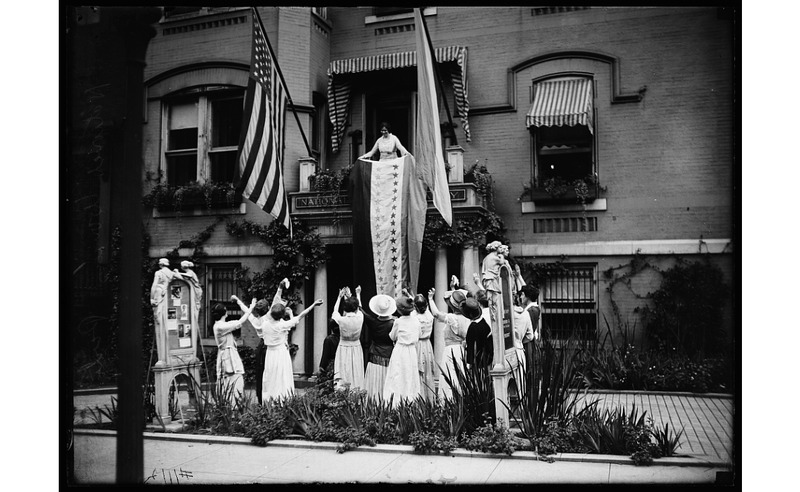The fight to secure women's suffrage in the U.S. spanned generations of activists. Through their writing, speaking, and publishing, suffragists put forward the radical notion that women rightfully had a role to play in politics. To combat opponents' characterizations of them as manly, unattractive, emasculating, and silly, suffragists created their own powerful political imagery, visible in their posters, postcards, buttons, and banners; their clothing and use of color; elaborate parades and visual spectacles, and use of photography, particularly portraiture. American suffragists drew inspiration from their British counterparts and contributed to the international women's movement through organizations such as The International Woman Suffrage Alliance. The suffrage movement's successful use of visual politics and non-violent civil disobedience, including hunger strikes, influenced subsequent social movements including the campaign for India's influence from British rule and the African American civil rights movement. Indeed, it was not until passage of one of that movement's greatest achievements, the 1965 Voting Rights Act, that African American women were fully enfranchised, the culmination of more than a century of struggle.
Much of the suffrage movement's political imagery remains compelling today. However, the exclusion of women of color from suffragists' visual campaigns as well as their use of stereotypes mark the limitations of the suffrage movement's imagination in the early twentieth century. The exhibitions here are intended to contribute to preservation of a critical public memory of women's suffrage, and to spur reflection and inspiration regarding the lessons of past movements for social justice for contemporary activism.
Here in Rochester, New York, public memory of suffrage leader Susan B. Anthony continues to inspire political participation, as this short documentary film depicts: Election Day 2016.
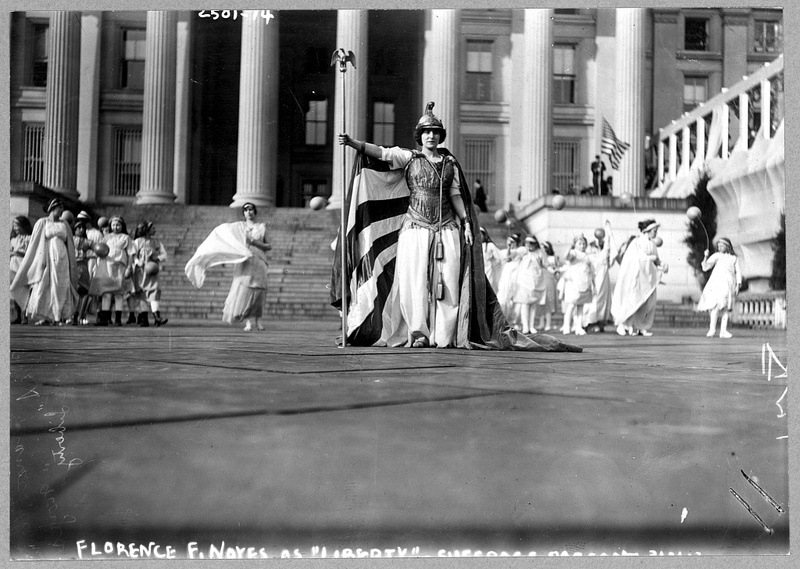
[German actress Hedwig Reicher wearing costume of "Columbia" with other suffrage pageant participants standing in background in front of the Treasury Building, March 3, 1913, Washington, D.C.]
Title devised by Library of Congress staff based on New York Times article, March 3, 1913.- Caption in the photograph may refer to one of the background figures in veils: "Florence F. Noyes as 'Liberty' in suffrage pageant." The pageant featured an allegory in which Columbia summoned Justice, Charity, Liberty, Pease, and Hope to review the new crusade of women.

